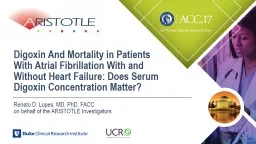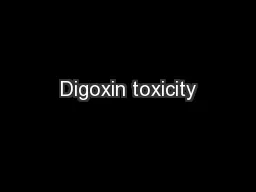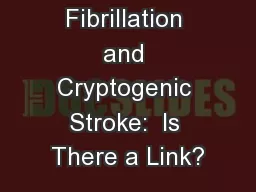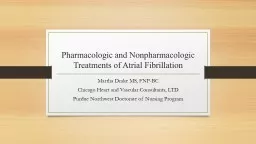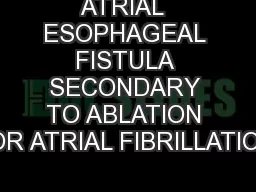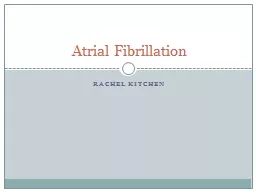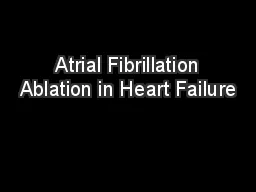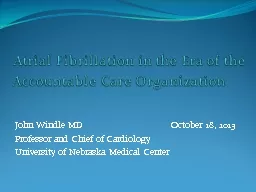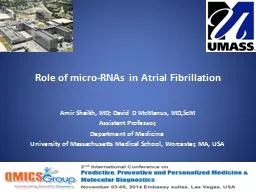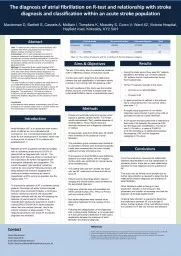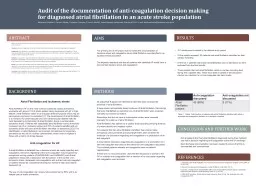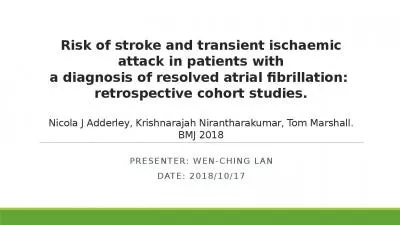PPT-Digoxin And Mortality in Patients With Atrial Fibrillation With and Without Heart Failure:
Author : debby-jeon | Published Date : 2019-06-19
Renato D Lopes MD PhD FACC on behalf of the ARISTOTLE Investigators Disclosures The ARISTOTLE trial was sponsored by BristolMyers Squibb and Pfizer The present analysis
Presentation Embed Code
Download Presentation
Download Presentation The PPT/PDF document "Digoxin And Mortality in Patients With A..." is the property of its rightful owner. Permission is granted to download and print the materials on this website for personal, non-commercial use only, and to display it on your personal computer provided you do not modify the materials and that you retain all copyright notices contained in the materials. By downloading content from our website, you accept the terms of this agreement.
Digoxin And Mortality in Patients With Atrial Fibrillation With and Without Heart Failure:: Transcript
Download Rules Of Document
"Digoxin And Mortality in Patients With Atrial Fibrillation With and Without Heart Failure:"The content belongs to its owner. You may download and print it for personal use, without modification, and keep all copyright notices. By downloading, you agree to these terms.
Related Documents

